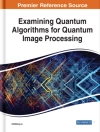As future generation information technology (FGIT) becomes specialized and fr- mented, it is easy to lose sight that many topics in FGIT have common threads and, because of this, advances in one discipline may be transmitted to others. Presentation of recent results obtained in different disciplines encourages this interchange for the advancement of FGIT as a whole. Of particular interest are hybrid solutions that c- bine ideas taken from multiple disciplines in order to achieve something more signi- cant than the sum of the individual parts. Through such hybrid philosophy, a new principle can be discovered, which has the propensity to propagate throughout mul- faceted disciplines. FGIT 2009 was the first mega-conference that attempted to follow the above idea of hybridization in FGIT in a form of multiple events related to particular disciplines of IT, conducted by separate scientific committees, but coordinated in order to expose the most important contributions. It included the following international conferences: Advanced Software Engineering and Its Applications (ASEA), Bio-Science and Bio- Technology (BSBT), Control and Automation (CA), Database Theory and Appli- tion (DTA), Disaster Recovery and Business Continuity (DRBC; published indepe- ently), Future Generation Communication and Networking (FGCN) that was c- bined with Advanced Communication and Networking (ACN), Grid and Distributed Computing (GDC), Multimedia, Computer Graphics and Broadcasting (Mul Gra B), Security Technology (Sec Tech), Signal Processing, Image Processing and Pattern Recognition (SIP), and u- and e-Service, Science and Technology (UNESST).
Daftar Isi
A Systematic Literature Review of Software Process Improvement in Small and Medium Web Companies.- An XCP Based Distributed Calibration System.- Structural and Behavioral Detection of Design Patterns.- Test Case Minimization and Prioritization Using CMIMX Technique.- Embedded Control Software Design with Aspect Patterns.- Towards a Consistent Semantics for Unsafe Time Petri Nets.- A Multiple Viewed Interrelated Ontology Model for Holistic Component Specification and Retrieval.- A Conflict-Based Model for Problem-Oriented Software Engineering and Its Applications Solved by Dimension Change and Use of Intermediary.- Requirements Engineering Problems and Practices in Software Companies: An Industrial Survey.- A Formal Methodology for Semantics and Time Consistency Checking of UML Dynamic Diagrams.- A Process Model for Forensic Analysis of Symbian Smart Phones.- Reliability Analysis Method for Supporting Traceability Using UML.- Applying Agility Framework in Small and Medium Enterprises.- Using Area-Team to Evaluate the Software Architecture for an Online Banking System: A Case Study.- Architectural Decay during Continuous Software Evolution and Impact of ‘Design for Change’ on Software Architecture.- Software Fault Localization Using Elastic Net: A New Statistical Approach.- Applying Formal Methods to Process Innovation.- Abstracting Models from Execution Traces for Performing Formal Verification.- A Hybrid Model in Dynamic Software Updating for C.- A Function Point Logic File Identification Technique Using UML Analysis Class Diagrams.- Reliable Mobile Application Modeling Based on Open API.- An Improved Steganography Covert Channel.- Software Test Data Generation Based on Multi-agent.- Knowledge Creation and Creativity in Agile Teams.- TEST: Testing Environment for Embedded Systems Based on TTCN-3 in SILS.- A Framework for Measuring the Alignment between Business Processes and Software Systems.- Service Composition System in Consideration of the Characteristics of Services.- Business Viability Assessment of Potential Software Projects: An Empirical Study with the CASSE Framework.- Aligning the Software Project Selection Process with the Business Strategy: A Pilot Study.- RE4Gaia: A Requirements Modeling Approach for the Development of Multi-Agent Systems.- Execution Traces: A New Domain That Requires the Creation of a Standard Metamodel.- Software Performability Measurement Based on Availability Model with User-Perceived Performance Degradation.- An Experimental Evaluation of Error Rate in a Web Server System.- A New Criterion for the Optimal Software Release Problems: Moving Average Quality Control Chart with Bootstrap Sampling.- An EM Algorithm for Record Value Statistics Models in Software Reliability Estimation.- Yet Another Metric for Predicting Fault-Prone Modules.- Quantifying the Influences of Imperfect Debugging on Software Development Using Simulation Approach.- Service Reliability and Availability Analysis of Distributed Software Systems Considering Malware Attack.- A Test Coverage-Based Model for Predicting Software Fault Content and Location during Multi-phase Functional Testing.- A Refined Non-parametric Algorithm for Sequential Software Reliability Estimation.- A Tool-Supported Process for Reliable Classification of Web Pages.












